

















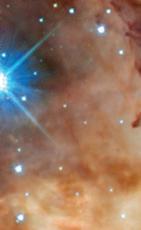
























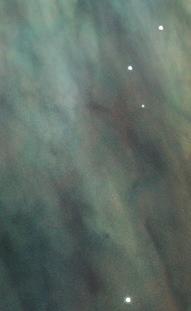














































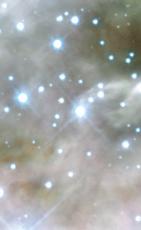






















CECILIA CHARLTON































12 Northgate, Chichester West Sussex PO19 1BA +44 1243 528401 +44 7794 416569 info@candidastevens.com www.candidastevens.com






































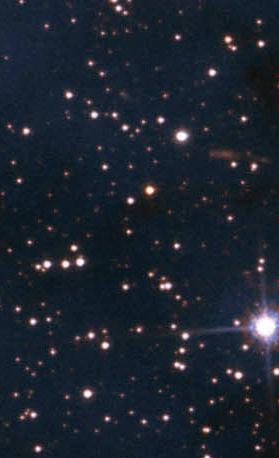




















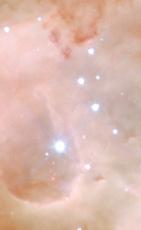


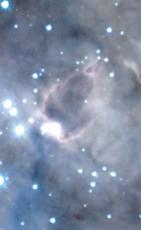

















It is a strange realism, but it is a strange reality.
… Still there are seeds to be gathered, and room in the bag of stars.
Cecilia Charlton trained as a painter, but it is in textiles that she has found her medium. In her intricate embroideries and weavings abstract patterns of numinous power emerge from shimmering multi-coloured backgrounds. Whether achieved through the use of thread on cotton canvas, enlivened by paint and gilding, or through the complex interactions of a four-shaft loom, these shapes give vivid three-dimensional form to complex underlying mathematical structures. Ethereal and mysterious in origin, these presences are also somehow earthily grounded through their embodiment in thread - this fundamental cultural material, which reaches back through millennia, but also gave birth to the digital present and future, through the sophisticated technology of the loom.
The vital strength of Charlton’s work owes much to the circuitous route she has taken to discover her creative language. She describes each stage as more or less an accidental turn, and yet, in hindsight, the map was there. Charlton grew up in a family of sewers. Her grandmother had a masters in textiles from the Wayne State University in Detroit. Her mother set up as a seamstress in her mid-forties, a business that she maintained for 25 years. Charlton and her sisters were taught to sew, growing up, and introduced to a variety of techniques. But when it came to Charlton’s own career choices, it was to her father’s profession within the sciences that she looked. As she puts it, “I think that it was presented to me growing up that engineering was the profession and sewing was the hobby or the domestic activity.”
URs U la K. l e G U inTwo weeks into an engineering degree, however, at the University of Pittsburgh, to which she had won a scholarship, Charlton realised that her fascination with mathematics took her only so far. She abandoned the course, travelled in Central America, joined an intentional community where she learned to throw pottery, and then moved to the Hudson Valley as a ceramics assistant. Working in remote isolation for one sculptor, with whom she deconstructed and reconstructed a woodfired kiln, by chance she met someone whose son had done a Fine Art degree at Hunter College. She applied and got in. To her surprise, among all the disciplines, it was paintings that drew Charlton. She loved its freedom from the constraints of function and the joy of colour.
So Charlton began her MA at the Royal College of Art in London as a painter. She was making precise, clean, geometric abstract work. As her final year thesis made evident, her references were titans of twentieth century abstraction - Hilma Af Klint, Sol le Witt, Dan Flavin, Tomma Abts - as well as Aboriginal art. Charlton’s take on these artists is distinctive. Her thesis, titled with teasing dryness
Abstracting Abstraction: a Mathematical Approach to the Mechanics of Abstract Aesthetics, sets out to show how consistently, throughout art history, abstract art, far from distancing artists from reality, has enabled an opening to a transcendent reality, whether metaphysical, spiritual or conceptual. She explores her awareness that, just as in her own work today, lying behind the abstraction, giving rise to it, are pressing human concerns. This intuition was reinforced by Charlton’s first trip to Italy, for her first New Year in Europe. Here, it was the mosaics on the floors of ancient buildings that overwhelmed her: “Throughout the floor of the church there would be hundreds of patterns and you didn’t need to have hundreds of patterns. There was something reverential about that abundance,” she says. Seeing in this the germ of her later interest in textile, Charlton identifies in both media: “the connection between labour and reverence; labour and transcendence; the connections between pattern and the spiritual; the ways pattern stands in for or connects us to these transcendental realms.”
A summer residency in Sweden was preceded by the serendipitous discovery of a book about Bargello, a type of embroidery named for examples found on chairs in the Bargello palace in Florence. The technique involves laying vertical stitches in a mathematical pattern to create motifs, with no stitches crossing or going sideways. They can be organised in different clusters to create dancing or swooping curves. Charlton recognised that this was a medium that is geared towards representing pattern, in contrast with paint: “I just thought that this is a way to work collaboratively with a medium rather than fighting a medium that I feel I have to dominate or control.” She began to experiment, finding a pleasure in the astonishing effects — likes flames or ripples or passing shadows — that can be achieved from the vertical stitches. The combination of simplicity and complexity is itself a delight —
the dynamism of the patterns arising from the strict grid. Gradually Charlton has extended the effects she can achieve by painting on the cotton canvas and gilding parts of the thread.
Charlton returned to the RCA and did not create another painting. Bargello consumed her interest. Weaving, she suggests, came next as a complete surprise. She became interested in the genre through Welsh tapestry weaving, a technique for creating complex coloured geometric patterns on a loom by double weaving — in essence, creating two different cloths at once. In an enthusiastic passion, Charlton located her counter-march loom and began obsessively to study the theory and techniques of weaving. Through this complex, inherently digital process, she has found a different way of combining her love of order and mathematics with the vagaries of chance and intuitive disruption. She is able to create a great deal of complexity by loading stripes of coloured yarns onto the warp and then using different drafts of patterns, like musical scores, for the weft, using her treadles to swop between them. She moves instinctively from one to another, generating her own hybrid patterns, which while they maintain a vertical symmetry, like Rorschach blots, have no horizontal symmetry, suggesting a living spontaneity. Some of the shapes that emerge are more organic than geometric — as if they took advantage of this generative system to take form momentarily, their hovering presence, anchored by the warp, only provisional.
Charlton weaves and sews in tandem using Axminster’s and Appleton’s wool, yarn producers that date back to 1755 and 1850 respectively, both offering yarns from British sheep in a bounty of colours. The many layers of colour achieved by both processes produce an effect like paint glazes, building up an optical experience of great richness from tiny pixels of individuated hue. As Charlton says, however, “With a painting, colour is something that you apply to a substrate; with this, the colour is the substrate.” The works assert their presence, as if conjuring strange spirits into being.
e mma C R i C hton- m ille R January 2023

Thought-form [pyramid]
Hand-woven cotton and wool yarn 91.5 x 86.5 Cm, 2022



Thought-form [moat]
Hand-woven cotton and wool yarn 91.5 x 86.5 Cm, 2022

Wormhole Mosaic [sweat of the sun, tears of the moon] Hand-embroidered wool yarn and acrylic paint on canvas over painted and gilded panel 176 x 270 Cm, 2022









Thought-form [square]
Hand-woven cotton and wool yarn 40.5 x 30.5 Cm, 2022
Thought-form [arch]
Hand-woven cotton and wool yarn 40.5 x 30.5 Cm, 2022

Thought-form [shield]
Hand-woven cotton and wool yarn
40.5 x 30.5 Cm, 2022
Three beings [navy-teal-peach on pastel ground]
Hand-woven cotton and wool yarn 91.5 x 86.5 Cm, 2022

Three beings [peach-teal-navy on pastel ground] Hand-woven cotton and wool yarn 91.5 x 86.5 Cm, 2022




Three beings [blue-bronze-yellow on high-contrast ground] Hand-woven cotton and wool yarn 91.5 x 86.5 Cm, 2022

Three beings [yellow-bronze-blue on high-contrast ground] Hand-woven cotton and wool yarn 91.5 x 86.5 Cm, 2022


Pattern analysis [Golden Ratio, seafoam and coral] Hand-embroidered wool yarn and acrylic paint on canvas over painted and gilded panel 147 x 90 Cm, 2022


Pattern analysis [Golden Ratio, blue and purple] Hand-embroidered wool yarn and acrylic paint on canvas over painted and gilded panel 90 x 67 Cm, 2022

Pattern analysis [Golden Ratio, yellow and fucshia]
Hand-embroidered wool yarn and acrylic paint on canvas over painted and gilded panel 67 x 40 Cm, 2022

Pattern analysis [Golden Ratio, seafoam and green] Hand-embroidered wool yarn and acrylic paint on canvas over painted and gilded panel 67 x 40 Cm, 2022

Pattern analysis [Golden Ratio, yellow and coral]
Hand-embroidered wool yarn and acrylic paint on canvas over painted and gilded panel 40 x 33 Cm, 2022

Pattern analysis [Golden Ratio, green and blue] Hand-embroidered wool yarn and acrylic paint on canvas over painted and gilded panel 40 x 33 Cm, 2022

Solitary being [peach] Hand-woven cotton and wool yarn 41 x 35.5 Cm, 2022

Solitary being [grey] Hand-woven cotton and wool yarn 41 x 35.5 Cm, 2022
Solitary being [brick] Hand-woven cotton and wool yarn 41 x 35.5 Cm, 2022


Sun Queen Rising [green]
Hand-embroidered wool yarn and acrylic paint on canvas over painted and gilded panel 40 x 40 Cm, 2022
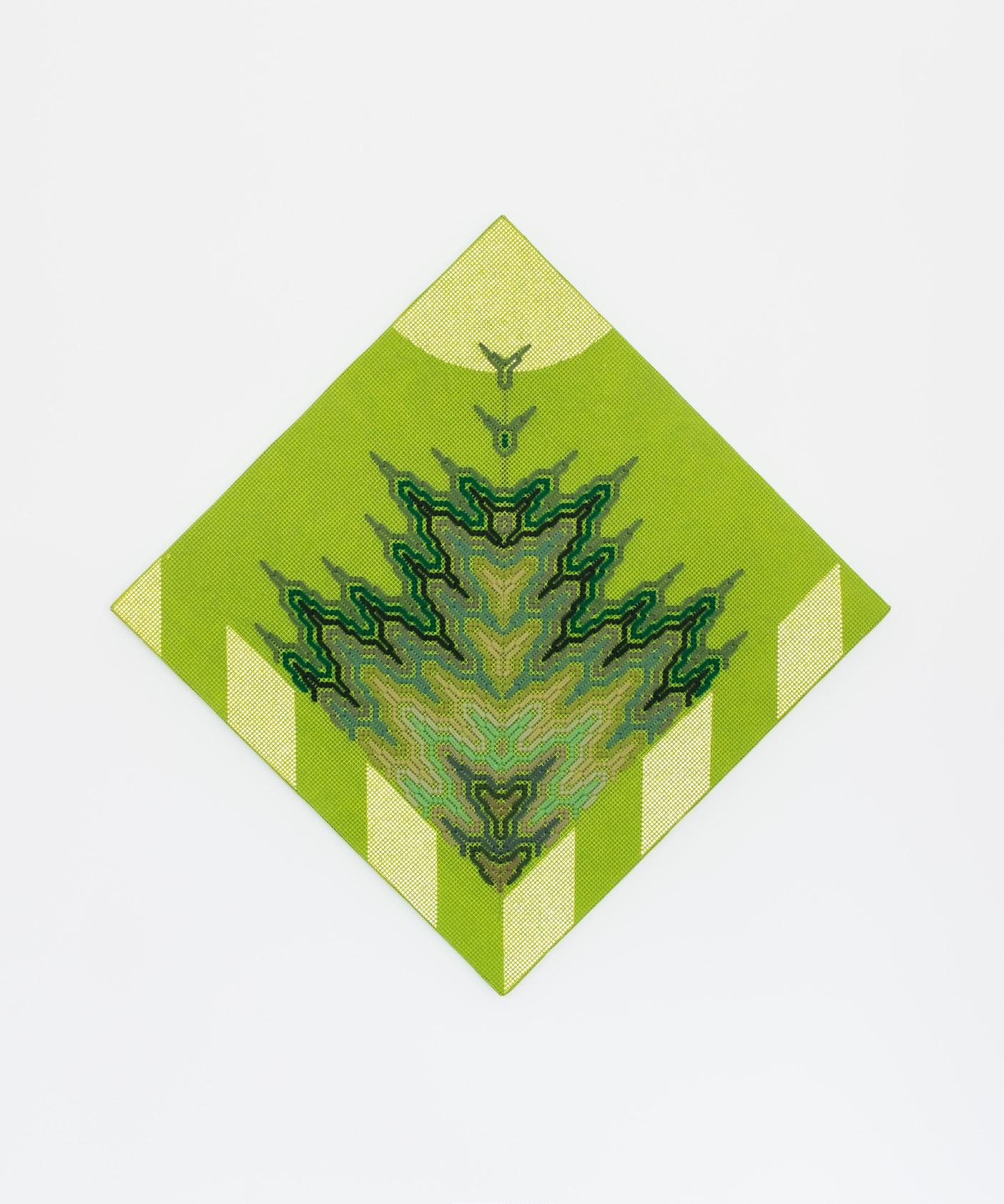
Sun Queen Rising [blue]
Hand-embroidered wool yarn and acrylic paint on canvas over painted and gilded panel 40 x 40 Cm, 2022

Sun Queen Rising [red]
Hand-embroidered wool yarn and acrylic paint on canvas over painted and gilded panel 40 x 40 Cm, 2022

Sun Queen Rising [yellow]
Hand-embroidered wool yarn and acrylic paint on canvas over painted and gilded panel 40 x 40 Cm, 2022

Punch card -- Patchwork [blue] Hand-embroidered wool yarn and acrylic paint on canvas over painted panel 45 x 38 Cm, 2022





Punch card -- Patchwork [grey]
Hand-embroidered wool yarn and acrylic paint on canvas over painted panel 45 x 38 Cm, 2022
Punch card -- Patchwork [red]
Hand-embroidered wool yarn and acrylic paint on canvas over painted panel 45 x 38 Cm, 2022
Punch card -- Patchwork [teal]
Hand-embroidered wool yarn and acrylic paint on canvas over painted panel 45 x 38 Cm, 2022
Punch card -- Patchwork [pink]
Hand-embroidered wool yarn and acrylic paint on canvas over painted panel 45 x 38 Cm, 2022
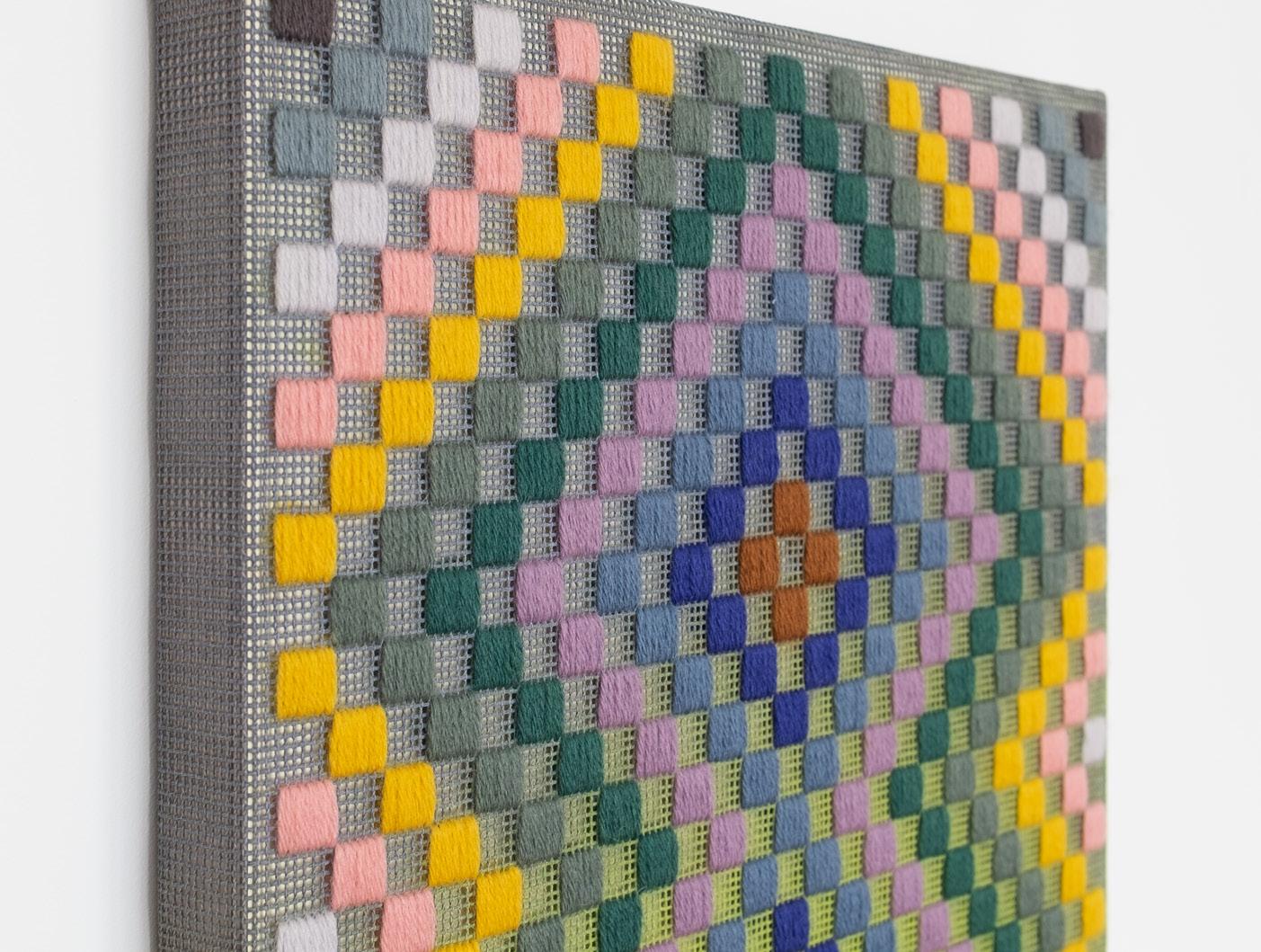


Stargazer [teal and navy]
Hand-woven cotton and wool yarn 35.5 x 35.5 Cm, 2022

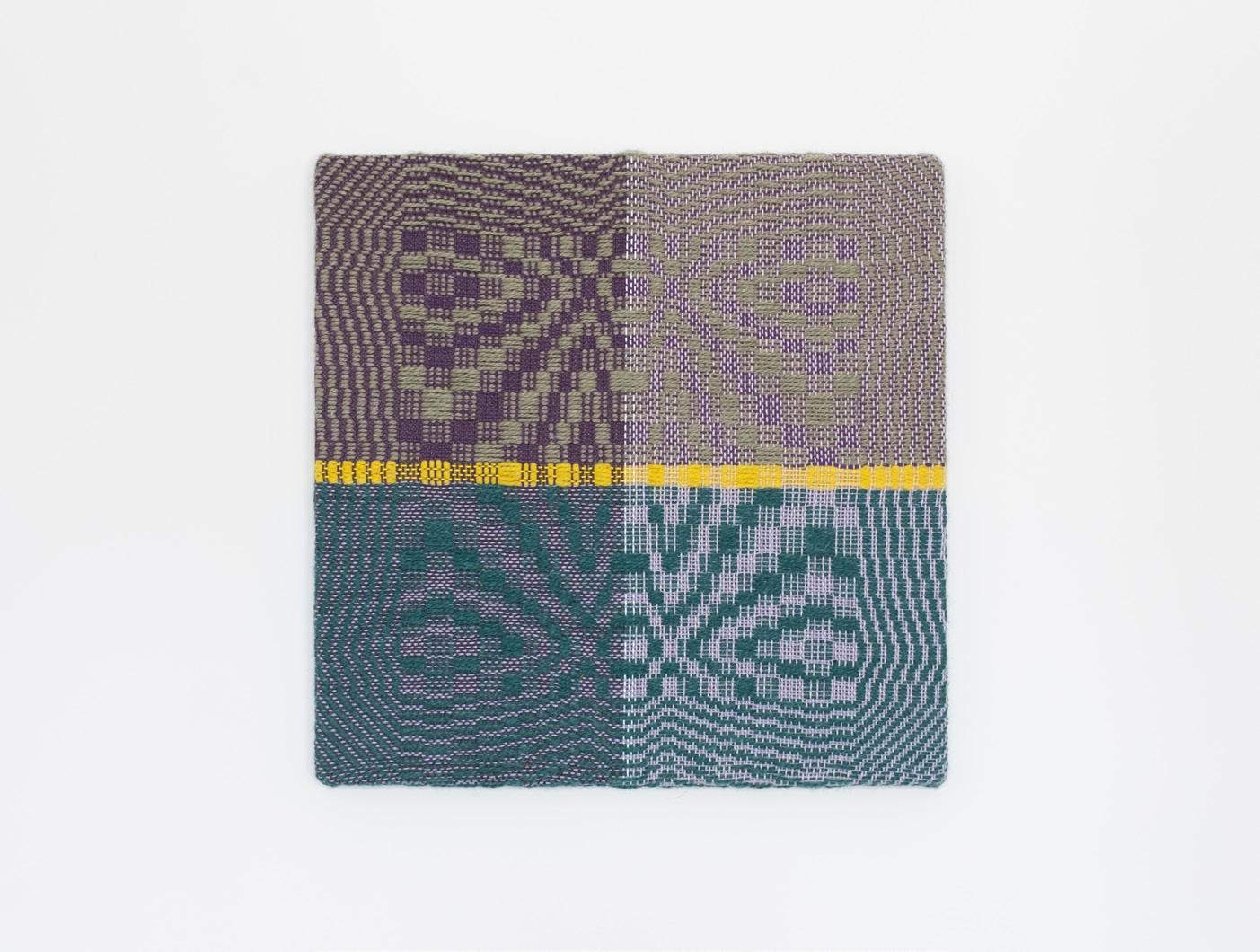

Stargazer [blue and maroon]
Hand-woven cotton and wool yarn 35.5 x 35.5 Cm, 2022
Stargazer [green and teal]
Hand-woven cotton and wool yarn 35.5 x 35.5 Cm, 2022
Stargazer [blue and navy]
Hand-woven cotton and wool yarn 41 x 35.5 Cm, 2022

Education
2018 Royal College of Art, London UK. MA Painting, Distinction
2015 Hunter College, New York NY. BFA Painting, Summa Cum Laude
Exhibitions
2022 Jerwood Art Fund Makers Open, Jerwood Arts, London; Newlyn Art Gallery, Newlyn, Cornwall; Aberdeen Art Gallery, Aberdeen, Scotland
COLLECT Art Fair, Candida Stevens Gallery, London
2021 Mammoth Loop, SPACE Ilford, London, sponsored by Mercers Charitable Foundation (solo) Love Token, Robert Young Antiques, London (solo) Folk Art, London Art Fair, Platform, Candida Stevens Gallery, London
2020 Aurora, Candida Stevens Gallery, Chichester UK (solo) Hanging by a thread, freethegallery, London when you make sense I feel, Fitzrovia Gallery, London
2019 In Praise of Shadows, curated by Ione & Mann, London Parade, Broadway Gallery, curated by Kris Day, Letchworth Garden City UK Domestic Hospitality, Zetter Hotel, London
RA Summer Exhibition, Royal Academy of the Arts, London Tender Touches, AMP Gallery, London
Grid :: Preset, Blyth Gallery, London
2018 FAKERS, curated by Cypher Collective, Thamesside Gallery, London Lifeline as Medium, 532 Gallery, NYC
STUDIO.US is an Experiment: Mix.B, Dyson Gallery, Royal College of Art, London From This Time — Unchained, curated by Ione & Mann, London Rogue Objects, Bloomsbury Festival, University College London, London Girls Just Want to Have Fun, Unit 3 Projects, London
COUPLES, The Hand, Brooklyn NY
SURGE: the East Wing Biennial, Courtauld Institute, London RCA Degree Show, Royal College of Art, London Rubber-chew // Clink, adieu, Unit 1 Gallery, London
An Audience of Echoes, Hockney Gallery, Royal College of Art, London Plants People Pots [an invitation], Pinch Project Space, London
2016 The Abstraction of Continents / The Continent of Abstraction, Lychee One Gallery, London
Curation
2020 when you make sense I feel, Fitzrovia Gallery, London 2019 A RAW GARDEN, Fitzrovia Gallery, London
2018 LEGS, Fitzrovia Gallery, London
Plants People Pots [an invitation], Pinch Project Space, London Copernicus & Galileo, Pinch Project Space, London
An Audience of Echoes, Hockney Gallery, London
Commissions
2022 Double Decker
London School of Economics
2021 Jerwood Arts
Mercers Charitable Foundation Robert Young Antiques
Vital Arts, on behalf of the NHS
2019 Cunard Line
Public Collections
Guy’s and St Thomas’ Hospital Vital Arts (NHS)
Residencies
2022 Villa Lena, Tuscany Italy (invited as Creative Collaborator)
2017 RUD AIR, Laxarby Sweden
2016 Vermont Studio Center, Johnson VT
2015 Arteles Creative Center, Haukivarji Finland
2014 Yale University Norfolk Summer Residency, Norfolk CT
Honors
2022 Brookfield Properties Craft Prize, short-listed
2021 Jerwood Arts, Jerwood Makers Open Award
2020 Vlieseline Fine Art Textiles Award, short-listed
2016 Fulbright UK Open Award, short-listed
2015 Vermont Studio Center, Artist Grant
Art of the Northeast Exhibition Andy and Marsha Glazer Painting Award
Hunter College, Kossak Painting Fellowship
2014 Yale University, Ellen Battel Stoeckel Painting Fellowship
Hunter College, Kossak Painting Fellowship
2010 NYFA, Strategic Opportunities Stipend
2009 NYFA, Strategic Opportunities Stipend
Teaching Experience/ Workshops
2022 Bargello Embroidery, Meadows, London UK (bargello embroidery workshop)
Workshop series at Villa Lena artist residency COSMOS, Jerwood Arts (bargello & crewel embroidery workshop)
2021 Mammoth Loop: A stitch in time, SPACE Ilford, London (series of textile workshops in collaboration with Age UK) Bargello Bonanza!, Robert Young Antiques, London (bargello embroidery workshop)
2019 Fruits of Origin: Thinking and Talking Beyond Embroidery, AMP Gallery, London
2018 Sewing Circle: Stitching and the Fabric of Conversation, UCL Art Gallery, London (crewel embroidery workshop) Slade School of Fine Art, UCL, London (visiting tutor)
Press /Publications
2022 The Guardian Hole & Corner blog Kinship + Craft (blog)
2021 Embroidery Magazine, Jan/ Feb 2021
2020 Tender Touches (publication)
Dovetail Magazine, Fall 2020
Art Fictions interview, podcast Festival of Quilts Magazine, Fall 2020
ArtMaze Magazine, Summer Issue 18
2019 Frieze Magazine
Vogue UK
FAD Magazine London Live Sixth Finch
2018 Present and Correct blog Young Space Interview
2016 New American Paintings, Northeast #122
Published in January 2023 by Candida Stevens Gallery on the occasion of an exhibition featuring the work of Cecilia Charlton.
The titles and body text are set in Adobe Caslon Pro designed by Carol Twombly in 1990 based on Caslon's own specimen pages printed between 1734 and 1770. The caption text and curriculum vitae entries are set in Mr Eaves Sans designed by Zuzana Licko in 2009 for Emigre Fonts. The cover title is based on Agne designed by Reza Rasenda and Riska Candra Dewi.
The cover collages are assembled from images of the cosmos and include documentation of the Cosmic Cliffs in the Carina Nebula, the Lagoon Nebula, the Pillars of Creation, a massive star-forming region in 30 Doradus, young stars sculpting gas with powerful outflows, and an infrared view of NGC-346.























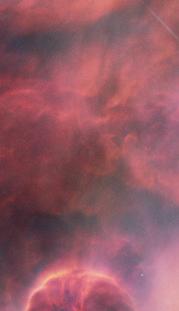

























Image credits: NASA, ESA, CSA, STScI, Antonella Nota (STScI, ESA), Elena Sabbi (ESA, STScI)




































Image processing: Joseph DePasquale (STScI), Alyssa Pagan (STScI), Anton M. Koekemoer (STScI)












Acknowledgement: Robert O'Connell (UVA), SOC-WFC3
Science: NASA, ESA, CSA, STScI



Typography and design by Bryan Reedy.
CataloGUe & text © 2023 Candida stevens Gallery. artworKs & imaGes © 2022 CeCilia Charlton.










PhotoGraPhs © 2022 CeCilia Charlton. all riGhts reserved.




















































































































